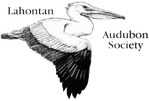|
By Kentia Kalanaki Bird feeders are very popular in backyards all over the country, and they are how many birders (including myself) started birding. Many times before, I have been concerned for the health of my backyard birds and have done research to see if feeders are really safe, and what the best food to give visiting birds is. Thankfully, I’ve found that almost all sources say that feeders indeed are safe, and here’s why. Contrary to many rumors I’ve heard, bird feeders never take up the majority of a bird’s diet, since birds are natural foragers and will continue to search for their natural food. The main threats that feeders pose to birds are spread of disease, which can be prevented by cleaning feeders frequently (see this article), and window collisions, which can also be prevented easily (see this article). Once you’ve taken any necessary steps to ensure the safety of your feeder friends, you might wonder what their favorite food is, what kinds of feeders are the best for them, and what you can give them other than bird seed for some fun variety. So here’s a feeder-by-feeder guide to what the birds love! Seed feeders: Most people who have bird feeders in their yards have seed feeders, whether it be a platform feeder, a finch sock, or just a regular tube feeder. Of all the types of seed feeders, I prefer the tube feeder since it’s more hygienic than the platform feeder (the bird’s droppings don’t get into the seeds as easily) and it attracts more types birds than the finch sock (as only finches with small bills can get the seeds through the finch sock). As for the type of seed, nyjer is very popular but I’ve found that the finches at my feeders don’t like it much, and it’s often very messy on the patio. I like getting cracked sunflower seeds and mixing it with cracked corn and any store-bought seed mix. You should, however, be careful with store-bought seed mixes, as some of them have a lot of added ingredients that I don’t like giving to the birds. Make sure to store seeds in a dry area to stop them from going bad. Hummingbird feeders: These are fairly simple feeders, though they should be watched very closely for mold and cleaned frequently. All you need is sugar and water to make a mixture of 1 part sugar for every 4 parts water. Just make sure to never ever put dye in it (if you have a red colored feeder, that’s great, but if it’s transparent then you shouldn’t bother dyeing the sugar water as it can be harmful to the birds) and NEVER put honey in the mixture, because honey comes with a significant risk of a fungal infection for the hummingbirds and can kill them. Suet feeders: Most birds are happy with whatever kind of suet you put in your suet feeder, though if you feel like too few birds are visiting your feeder you can always try changing brands and flavors of suet to see which one they like best! I love my suet feeder, as it attracts a wide variety of really interesting birds! Oriole feeders: Sometimes, Orioles are attracted to suet feeders (if you have fruit-flavored suet) and hummingbird feeders, but if you want orioles in your yard, having an oriole feeder is always a great choice. If you want to feed them nectar, like you do hummingbirds, then feeders designed for them (generally larger, with larger perches and holes) will attract them better. However, you can also feed them fresh fruit and fruit jam or jelly as well. They especially like fresh oranges and grape jelly, though they also enjoy other types of fruit jam (like strawberry, raspberry, cherry, etc). Just remember to check the ingredient list on your jam/jelly to make sure it doesn’t have any artificial sweeteners in it, since those can be harmful for birds. There are oriole fruit and jelly feeders, which have spikes to stick orange pieces into and a bowl for the jelly. However, you could just put out some jelly in a bowl or smear some on orange slices and leave them out as well. Other fun things to feed birds:
I hope this guide was helpful for those of you who are looking to give your backyard birds a better feeding experience, or who want to attract more birds to your backyards. Happy birdwatching! |
topics
All
Archives
July 2024
|


 RSS Feed
RSS Feed